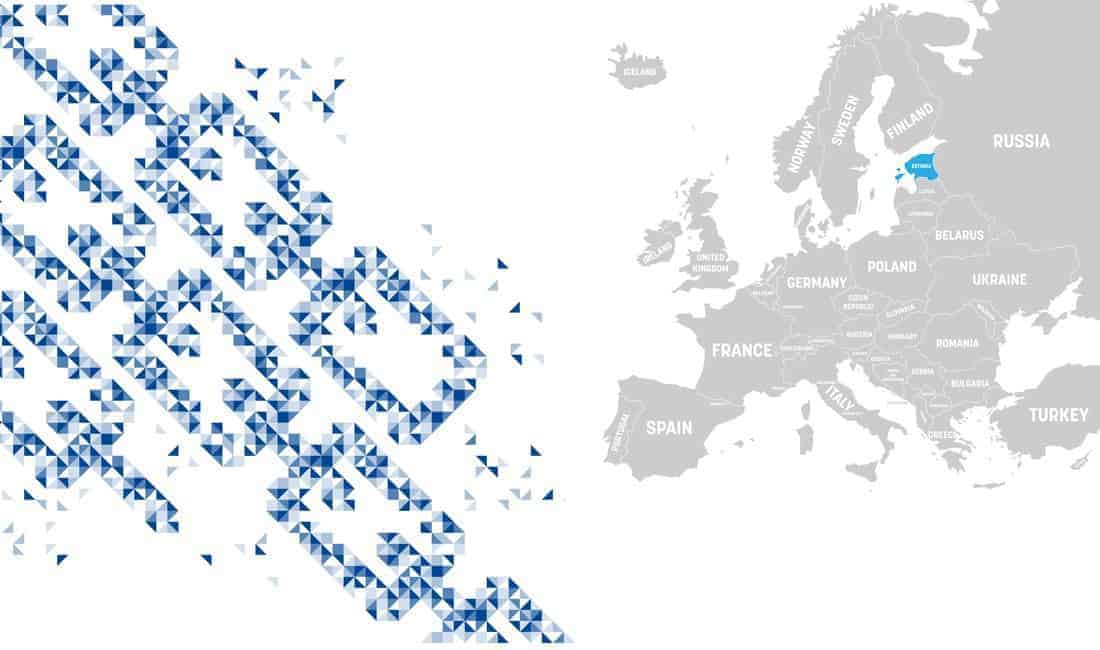It’s widely known that China and the US are always in competition. Governments are competing over various trade and foreign policy issues. At the same time, Chinese and American companies are in a technology race. The blockchain is no different. Currently, the companies that own the most blockchain patents are from either two countries. Alibaba holds the most patents, followed by IBM, Mastercard, Bank of America, and the People’s Bank of China. However, when it comes to blockchain adoption on a government level, nobody beats the small Baltic state of Estonia. Estonia is one of the leaders when it comes to e-government. In addition, it was the first country to offer electronic residency to people from other countries.
Estonia Embraced Blockchain Before It Was Cool
According to the country’s e-governance page, Estonia started testing blockchain technology in 2008. It was before Satoshi Nakamoto’s white paper about Bitcoin appeared. Instead, Estonia called the technology “hash-linked time-stamping.” After extensive testing, Estonia introduced the blockchain into some parts of its government in 2012. Specifically, blockchain stores Estonia’s data registries for national health, judicial, legislative, security and commercial code systems. Moreover, the country plans to further expand its use of blockchain into personal medicine, cybersecurity and data embassies.
The need for new technology to store data appeared following a series of cyber attacks. In 2007, the Estonian government decided to move a World War II statue of a Soviet soldier. Many pro-Russians were outraged and took it to the streets to protest. At the same time, a group of hackers launched a series of denial-of-service attacks at the websites of the Estonian government, banks, and media. The result was that for over two weeks, Estonians had difficulties with Internet access. In 2009, a member of a pro-Kremlin youth organization admitted to carrying out the attacks.
How Estonia Uses Blockchain Technology

Guardtime is the company behind Estonia’s blockchain. The technology is called KSI, which stands for Keyless Signature Infrastructure. The KSI Blockchain allows a user to send the asset’s hash and receive a token in return. This token serves as “proof-of-existence” and it acknowledges the participation in the transaction. The data itself never leaves the parties because only the hash passes through blockchain. In addition to the blockchain itself being immovable, Guardtime publishes blockchain code in physical media. Therefore, if someone wants to manipulate the blockchain, they would also have to track down thousands of papers and replace them as well, which is obviously impossible.
In Estonia, blockchain has several applications. Estonian e-Health Record issues electronic ID-cards that store data on the blockchain. This ensures data integrity and makes it easy to detect any potential damages to a person’s health. In addition, the KSI Blockchain provides security to a number of other registries. Among them are the e-Prescription database, the e-law and e-court systems, e-banking, e-Land Registry, and others.
In addition, there have been rumors that Estonia might launch its own cryptocurrency that would’ve been tied to the Euro. However, the European Central Bank criticized the idea. Estonian government dismissed the reports and said they never intended to launch a cryptocurrency. Instead, the country will use a token, EstCoin, within the e-government’s blockchain.
Blockchain Uses in Other Countries
Many countries acknowledge the advantages and benefits of blockchain technology. However, other than Estonia, other countries are still exploring potential applications. For example, the Swiss city of Zug uses blockchain to digitize ID registration and is working on e-voting. Zug also accepts cryptocurrency as payment for public services. Georgia has been testing a blockchain-based land registry. Dubai wants to move many government transactions into blockchain by 2020. Malta is to become the “first blockchain island.” These transactions would involve visa applications, bill payments, and license renewals.


